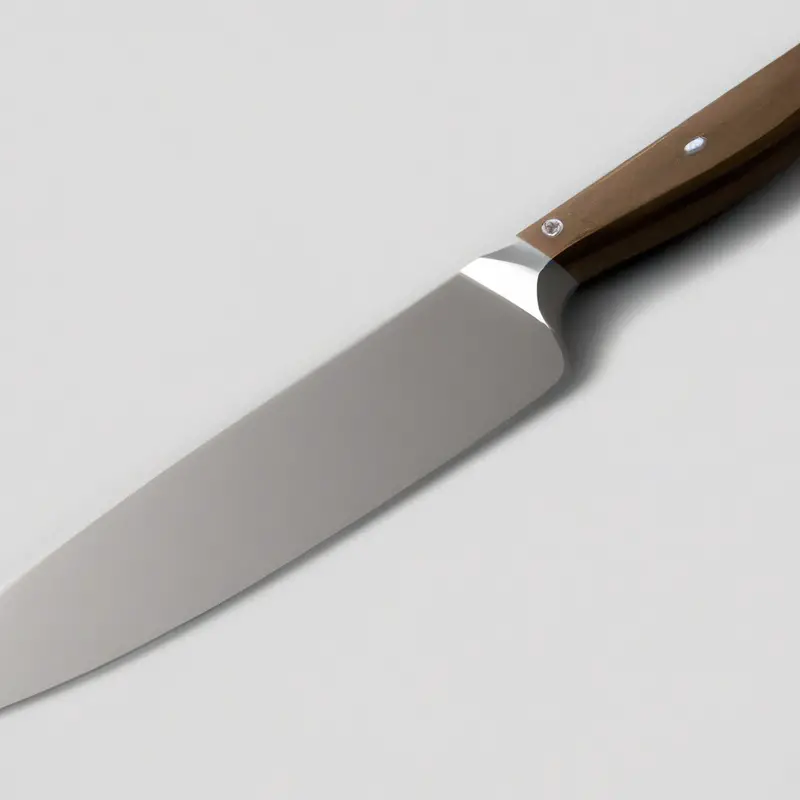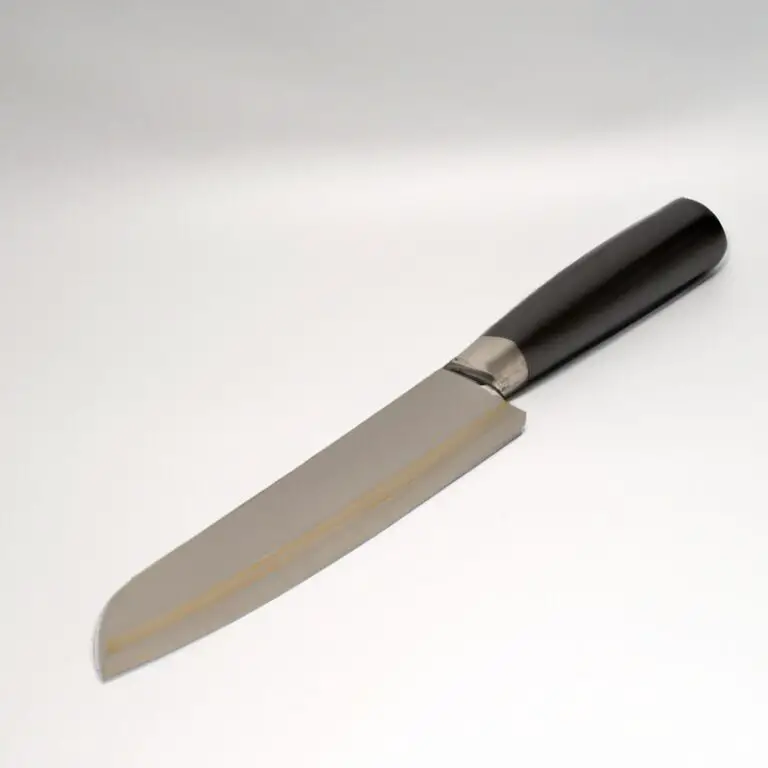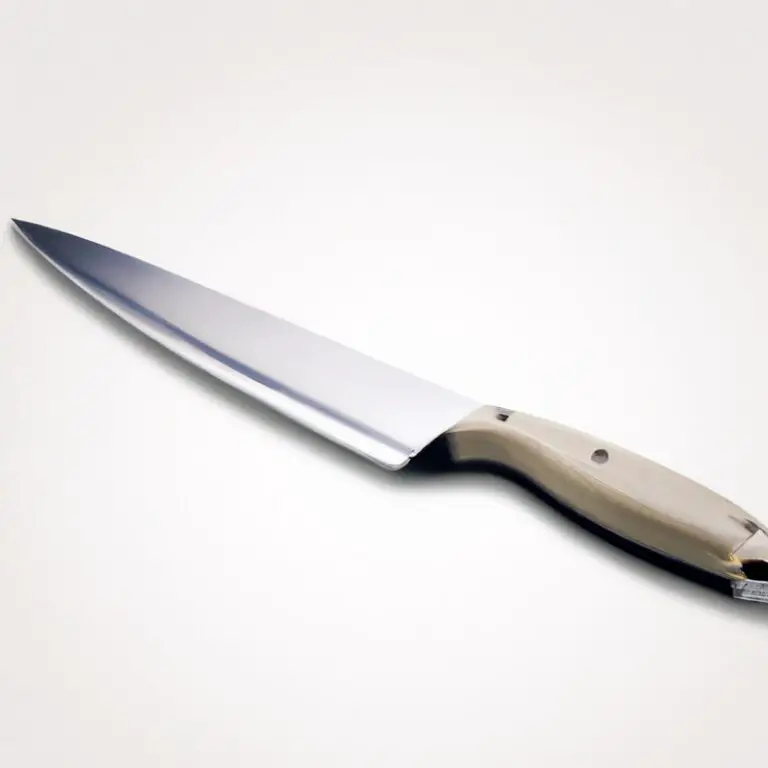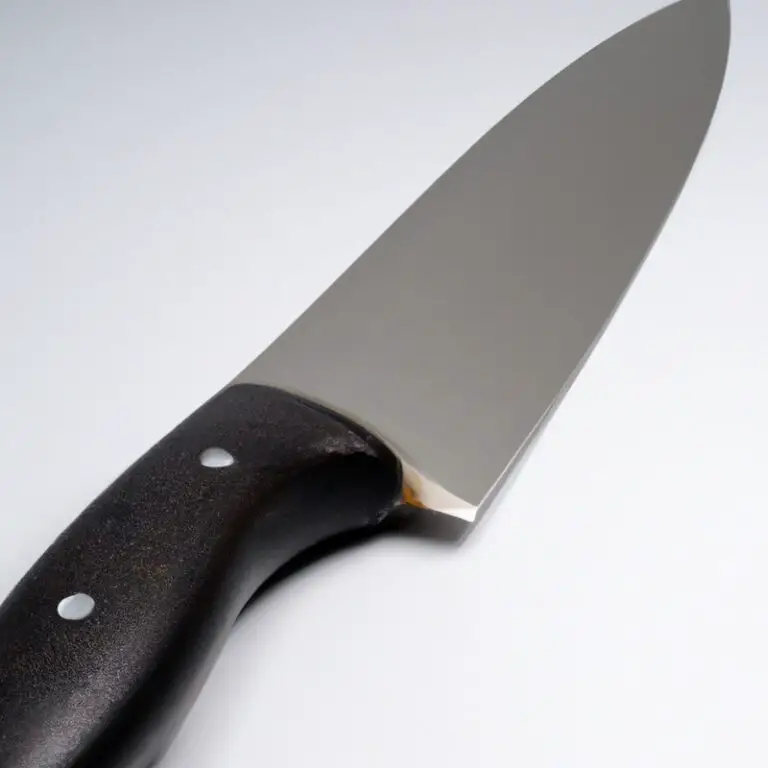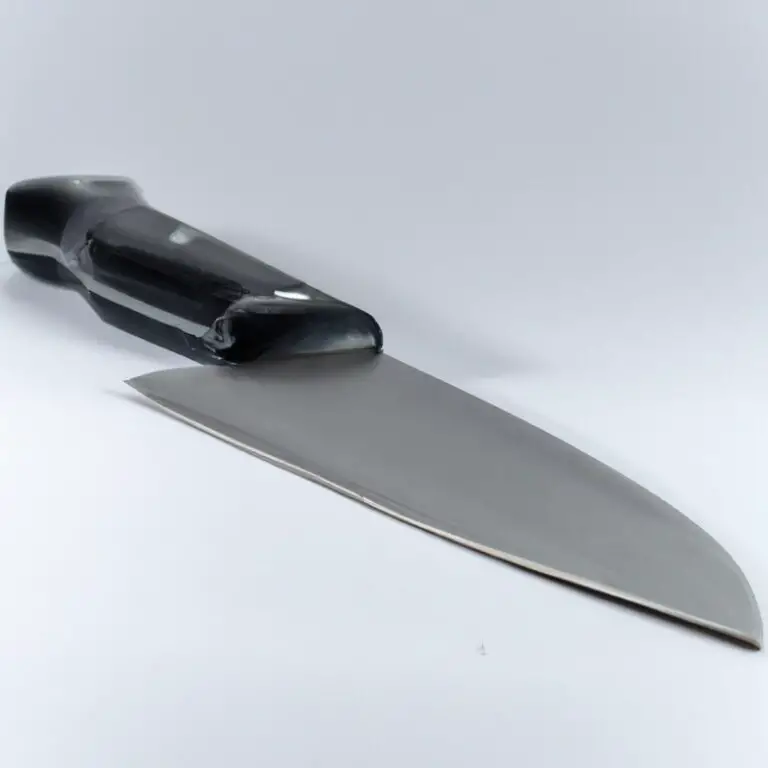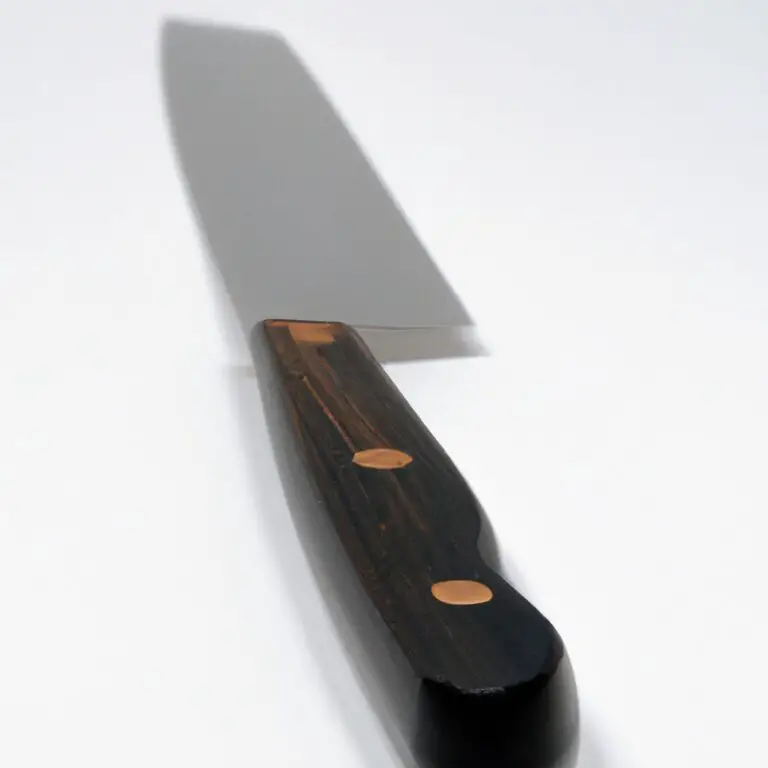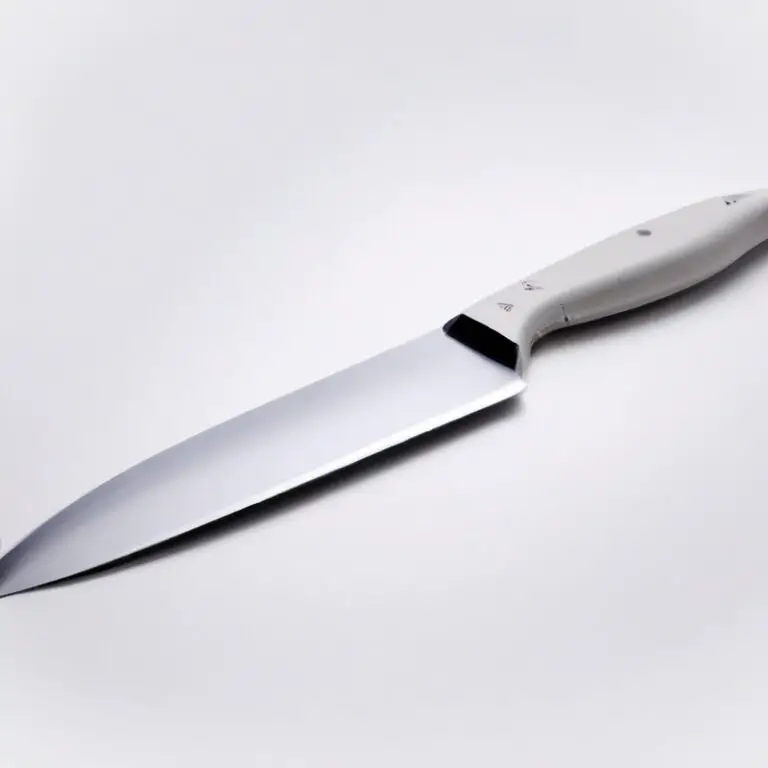How To Prevent Blade Staining On a Chef Knife? Try This!
Key Takeaways:
- Always wash your chef knife immediately after use and dry it thoroughly to prevent blade staining.
- Use a honing steel regularly to maintain the sharpness of the blade, which can also help prevent staining.
- Avoid cutting acidic foods like citrus fruits or tomatoes on the knife’s blade, as they can cause discoloration.
- Consider investing in a high-quality stainless steel chef knife that is less prone to staining and rusting than other materials.
Are you tired of seeing pesky stains on your chef knife’s blade? Not only can they be unsightly, but blade staining can also impact your knife’s performance over time.
As a chef, taking care of your tools is crucial.
In this article, I’ll share the common causes of blade staining and provide expert tips on how to prevent and remove stains on your chef knife. We’ll cover everything from proper cleaning and maintenance to the best products on the market.
Keep reading to ensure your chef knife stays in top shape for years to come.
| Method | Description |
|---|---|
| Wipe the blade after use | Using a clean and damp cloth, wipe the blade gently after each use. This will remove any food residue that can cause staining. |
| Avoid acidic foods | Foods with high acid content, such as tomatoes and citrus fruits, can cause staining. Use a cutting board to protect the blade. |
| Store the knife properly | Avoid storing the knife in moist places such as kitchen sinks. Instead, store the knife in a dry, cool, and protected place, such as a knife block, a sheath or a blade guard. |
| Clean the blade with baking soda | If the blade is already stained, sprinkle baking soda on the blade, add some water to make a paste, apply the paste to the blade, let it sit for a few minutes, and then rinse off. |
What is blade staining and how does it happen?
Blade staining is the discoloration or rust that forms on a knife’s blade. It happens when the blade is exposed to moisture, acidity or salts for long periods.
Factors like improper cleaning, high humidity, and poor storage also contribute to blade staining.
The stains can affect the sharpness and durability of the blade, making it less effective. Therefore, it is essential to clean and dry the chef knife properly after use, store it in a dry place, and avoid exposure to corrosive substances.
The impact of blade staining on your chef knife’s performance
Blade staining can have a significant impact on your chef knife’s performance. It can cause discoloration, rusting, and eventually lead to the dulling of the blade.
A discolored blade can also be a health hazard, as it can transfer harmful bacteria to food, affecting the quality of your dishes.
Furthermore, rusted blades are more prone to chipping and cracking, which can affect their durability. Therefore, avoiding blade staining is crucial to maintain your chef knife’s sharpness, strength, and hygiene.
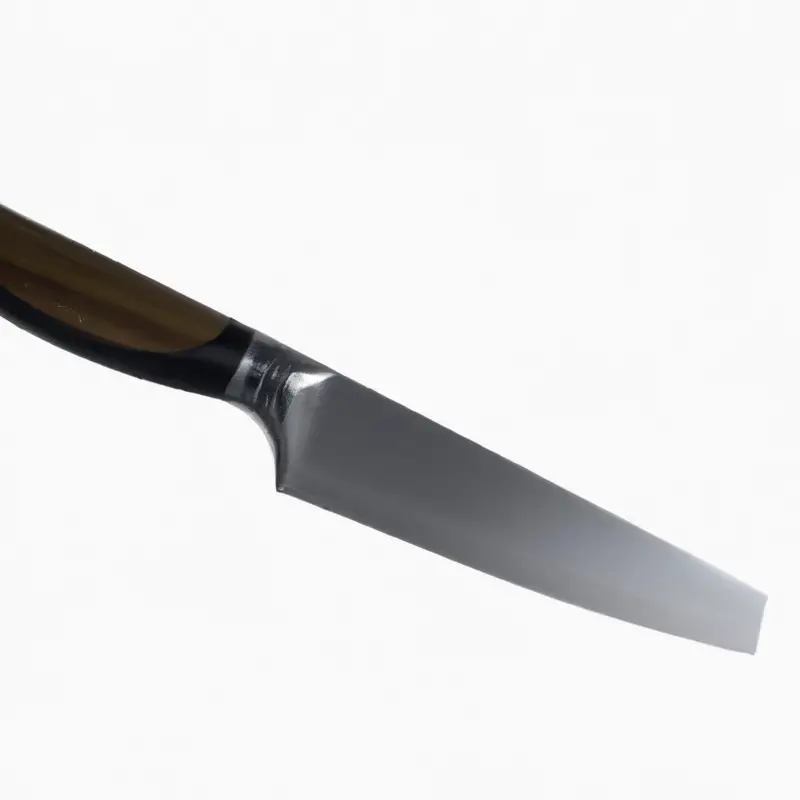
The common causes of blade staining and how to avoid them
The common causes of blade staining on a chef knife are exposure to acidic substances, moisture, and neglect in cleaning and maintenance. To prevent blade staining, it is crucial to avoid cutting acidic foods such as citrus fruits, tomatoes, and vinegar without wiping the blade immediately after use.
Any residual moisture on the blade can promote rust and corrosion, which leads to staining.
Moreover, failing to clean the knife after use and leaving it in damp conditions or without proper storage can also cause blade staining. To avoid staining, always wash and dry the knife after each use and store it in a dry area.
Consider using a specialized knife cleaner to remove any stains that might occur.
Understanding the difference between stainless steel and carbon blades in preventing staining
Stainless steel and carbon blades differ in their composition and behavior, affecting their susceptibility to staining. Stainless steel blades are highly resistant to corrosion and stain, making them an ideal choice for those who prioritize low maintenance.
However, they may require frequent sharpening and tend to be more brittle.
On the other hand, carbon blades provide superior sharpness and durability as they are harder and hold their edge longer. They are, however, more prone to corrosion and stain, requiring regular maintenance and care.
Ultimately, your choice of blade material should depend on your personal preference, usage, and willingness to maintain it.
How to clean and maintain your chef knife to prevent blade staining
To clean and maintain your chef knife to prevent blade staining, follow these steps regularly:
- Wash your knife by hand with mild soap and warm water.
- Dry your knife immediately with a soft cloth or towel.
- Store your knife in a dry place, away from moisture.
- Avoid using abrasive cleaners or scrubbers that can scratch the blade.
- Use a honing rod to keep the edge sharp, but do not over-sharpen.
- Avoid using your knife on acidic or corrosive substances.
- Use a food-safe lubricant to protect the blade from rust.
By following these steps, you can preserve the quality and durability of your chef knife, prevent staining, and keep it in optimal condition for cooking tasks.
The role of proper storage in preventing blade staining on a chef knife
Proper storage plays a crucial role in preventing blade staining on a chef knife. Ideally, knives should be stored in a dry and cool place, away from moisture, humidity, and direct sunlight.
If your knife is not going to be used for an extended period, it’s best to store it in a protective sheath or a knife block to protect the blade from external elements that could cause discoloration and deterioration.
Avoid storing knives in drawers or containers with other kitchen utensils, as this could lead to scratches and potential damage to the blade. In short, proper storage will ensure the longevity of your chef knife and keep it looking sharp and stain-free for years to come.
The importance of avoiding acidic and corrosive substances when using your chef knife
It’s crucial to avoid acidic and corrosive substances when using your chef knife. These substances can cause significant damage to your blade, resulting in discoloration, rust, and even pitting.
Acidic foods such as lemons, tomatoes, and vinegar can interact with the steel and cause it to corrode.
Therefore, it’s advisable to avoid cutting such foods directly on the blade, as well as to rinse the blade immediately after contact. Additionally, strong detergents or bleach can also damage your knife, so it’s best to clean your blade with a mild soap and water solution and dry it thoroughly after each use.
Remember, preventing exposure to acidic and corrosive substances can help keep your knife sharp and in excellent condition, ensuring it lasts for a long time.
The benefits of drying your chef knife properly after each use
Properly drying your chef knife after each use is crucial in preventing blade staining and maintaining its optimal performance. Benefits of drying your chef knife include preventing rust and corrosion, prolonging its lifespan, and ensuring it remains sharp and effective.
Moisture left on the blade can cause oxidation, which leads to rust and pits on the surface of the knife.
A dry knife also reduces the occurrence of bacterial growth and prevents unpleasant odors. By taking the time to dry your knife thoroughly, you can ensure its longevity and enjoy precision cutting for years to come.
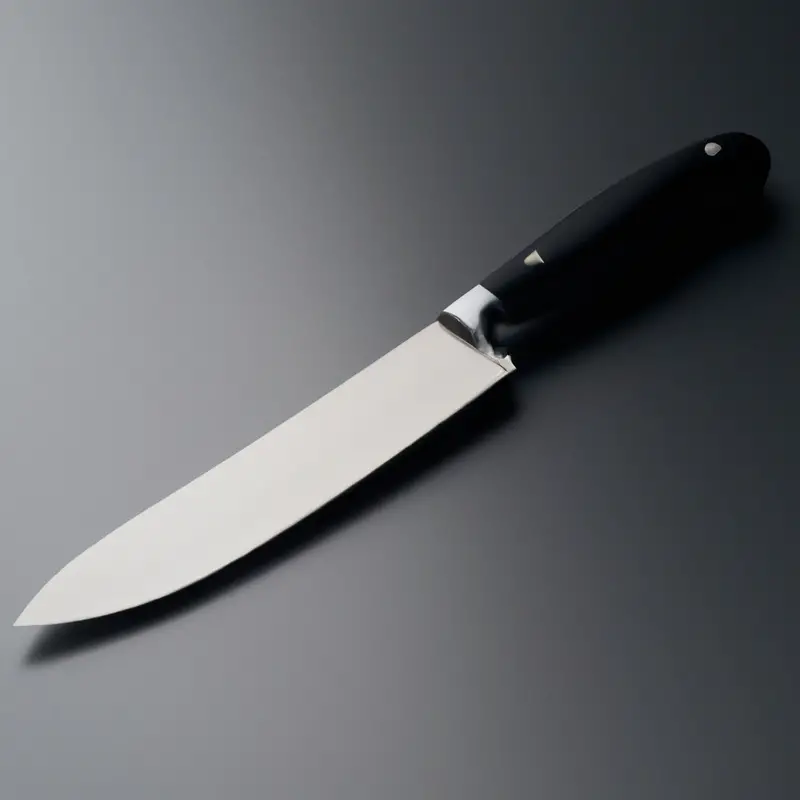
The top recommended products for preventing and removing blade staining on a chef knife
Some of the top recommended products for preventing and removing blade staining on a chef knife include:
- Bar Keeper’s Friend: This product is great for removing stains and rust on stainless steel and carbon steel blades.
- Flitz Polish: This is another effective rust and stain remover that works well on stainless steel and carbon steel blades.
- Camellia Oil: This oil is perfect for preventing rust and staining on carbon steel blades. It forms a protective layer that prevents moisture and air from coming into contact with the blade.
- Blade Guard: Investing in a blade guard is a simple way to protect your chef knife from moisture and dust, which can cause staining.
- Ceramic Sharpening Stone: A ceramic sharpening stone can help maintain the blade’s quality and prevent the formation of stains.
- Microfiber Cloth: Using a microfiber cloth to dry your knife after use can help prevent the accumulation of moisture, reducing the chances of staining.
Remember to read the product labels and instructions carefully to ensure that these products are suitable for your specific type of chef knife. By using these products and taking proper care of your knife, you can prevent and remove blade staining, which can extend the life of your valued kitchen tool.
Expert tips for preventing blade staining on your chef knife and maintaining its optimal performance
Expert Tips for Preventing Blade Staining and Maintaining Optimal Performance:
- Clean your knife immediately after use and avoid leaving it in contact with acidic or corrosive substances for extended periods.
- Dry your knife thoroughly after washing to prevent water spots and oxidation.
- Avoid using abrasive scrubbers or harsh chemicals when cleaning your knife, as they may cause damage to the blade’s finish.
- Store your knife in a dry place, preferably in a knife block or sheath, to protect it from moisture and humidity.
- Regularly sharpen your knife to maintain its edge and prevent it from being overworked, which can lead to blade staining.
- Consider investing in a high-quality knife made from stainless steel or carbon steel, as these materials are less prone to staining and corrosion.
- Use a food-safe lubricant, such as mineral oil or vegetable oil, to protect your knife’s finish and prevent staining.
- Consider purchasing a knife protector or sleeve to keep your knife safe and protected during storage and transportation.
By following these expert tips, you will ensure that your chef knife remains in optimal condition and functions at its best for years to come.
Final Verdict
Preventing blade staining on a chef knife requires awareness of its causes and adopting good maintenance habits. Stainless steel and carbon blades offer distinct advantages in preventing staining, but require different care routines.
Proper cleaning and storage, avoidance of acidic substances, and thorough drying are essential for maintaining good blade hygiene.
It is our hope that these tips and recommendations will help you preserve the longevity and performance of your chef knife, and avoid the pitfalls of rust and corrosion. Remember, a well-maintained knife is a chef’s best friend in the kitchen.
Trust your knife, and it will reward you with precision, efficiency, and reliability.

